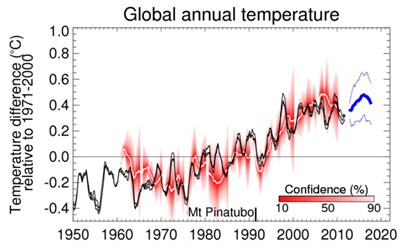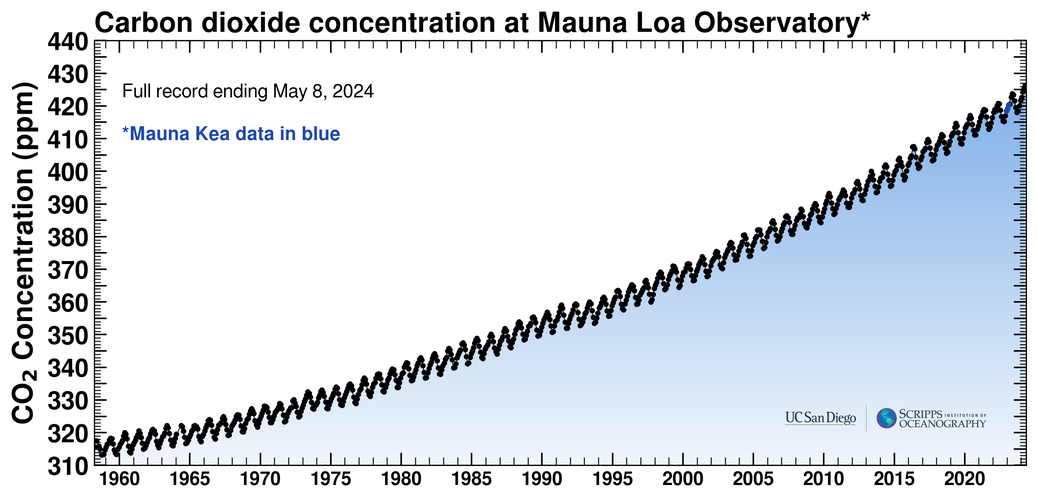Sustainable Development of Human Society
1. The Power of the Sun
Let's admit it: Humans have impacted our ecosystem negatively. However, it was not always the case. We were a part of nature a few hundred years ago; all necessities came from the sun. Our clothing, housing, food, were a gift from the Sun. Then came the rapid advancement in technology that spearheaded the Industrial Revolution.
2. Great Divergence
During the Industrial Revolution, researchers were discovering new and cheaper sources of energy. All of a sudden, there was an abundance of energy and an improvement in technology. Mankind discovered the potential of fossil fuels as cheap energy sources and burned them to generate energy. Our material wealth grew exponentially, as did our energy usage and the pollution we generated on Earth. Our consumption habits changed drastically due to development and an improvement in our standards of living.
3. From Unlimited to Limited Earth
A. Exploding production and consumption
As individual consumerism picked up speed, we began to generate more waste and junk. We though the Earth could yield unlimited resources-- we were wrong. The Earth had limited resources, which soon became a problem.
B. Exploding population
Research indicated that our Earth can support 2.5 billion people at a comfortable pace. We reached that number in 1950. Currently, the world's population is at an astounding 7.1 billion as estimated by the US Census Bureau. The combined effects of non-renewable sources depletion, unsustainable growth rate (starvation in many undeveloped countries) as well as world environmental damage is not to be looked down upon.
C. Exploding human footprint
What happens when we leave this earth to the next generation? The human imprint on Earth is tremendous. Look at the rising concentrations of greenhouse concentrations (the level for CO2 had just past 400ppm), loss in biodiversity, increase in both surface and ocean temperature and rise in sea levels. That is just the tip of the iceberg of what is about to come. In 2010, National Geographic published data that showed that we are using 1.5 times of what earth is able to provide. If the world were to consume at the rate America does, we would need 5.4 Earths.
Oops. Big Trouble. WE HAVE ONLY ONE EARTH
Why are we wasting the chance to change, to transform things when we still have the chance to?Yet more and more records are set each year, and I dare say more will be set in the future to come. Everyday, we are facing the crisis of human survival. Mankind's worst fears have shifted from nuclear warfare to human survival in these decades.
4. A Crisis of Human Survival
A. Rising Temperature and Changing Climate

Picture from: http://www.aps.org/units/fps/newsletters/200904/trenberth.cfm

Picture from: http://www.carbonbrief.org/blog/2013/01/why-the-met-office%E2%80%99s-revised-forecast-still-doesn%E2%80%99t-show-global-warming-has-stopped
It can be seen that the increase in temperature in the last 50 years is very significant. Most of the trapped heat is stored in the oceans which act as heat sinks due to water's high specific heat.
Special: IPCC Assessment Reports
The Intergovernmental Panel on Climate Change (IPCC) had published Assessment Reports on Cimate Change in 2001 and 2007 (Known as TAR and AR4 respectively), where in one section they organised the many risks and possible effects of climate change into five general areas, or "Reasons for Concern". As seen in the picture below, the threats increase as global temperature increase.

Picture from: http://en.wikipedia.org/wiki/Reasons_for_concern, source: TAR 2001
The following is data taken from the Fourth Assessment Report done by the IPCC in 2007:
The concentration of atmospheric CO2 has increased from a pre-industrial value (in 1750) of about 280 ppm to 379 ppm in 2005. That is a difference of approximately 100 ppm. In comparison, the atmospheric CO2 concentration increased by only 20 ppm over the 8000 years prior to industrialisation; multi-decadal to centennial-scale variations were less than 10 ppm and likely due mostly to natural processes. The annual CO2 growth rate was larger during the last 10 years (1995–2005 average: 1.9 ppm yr–1) than it has been since continuous direct atmospheric measurements began (1960–2005 average: 1.4 ppm yr–1).
Emissions of CO2 from fossil fuel use and from the effects of land use change on plant and soil carbon are the primary sources of increased atmospheric CO2. Since 1750, it is estimated that about 2/3rds of anthropogenic CO2 emissions have come from fossil fuel burning and about 1/3rd from land use change. About 45% of this CO2 has remained in the atmosphere, while about 30% has been taken up by the oceans and the remainder has been taken up by the terrestrial biosphere.
And to show a graphical trend, here is a Keeling Curve taken from Scripps Institution of Oceanography. The CO2 concentration has officially reached 400 ppm on 9 May, 2013. But what is the significance of the magic number? The International Energy Agency's World Energy Outlook has set a goal for mankind: To limit the concentration of CO2 in the atmosphere to around 450 ppm, such that the temperature rise is 2 degrees Celcius from pre-industrial levels. However, Hansel and Sato (2011) disagrees, stating that the goals of limiting CO2 levels to 450 ppm is equivalent to a recipe for disaster. They eventually concluded that it would be necessary to reduce CO2 levels to around 350 ppm to avoid unacceptable climate effects.

Picture taken from: http://keelingcurve.ucsd.edu/
If we were to accept IEA's prediction and go with 450 ppm, judging by the average annual increase of 2.07 ppm in the concentration of CO2, we will reach the "limit" in 25 years. The same team who published the "Reasons for Concern" diagram in 2001 updated the same diagram to keep in line with increased global temperatures.

Picture from: http://www.pnas.org/content/106/11/4133.full.pdf+html
This is a reality we have to face. Floods are happening more frequently, with the flood in Australia (2011) described as of "biblical proportions ". More than 700 people died in the 2009 flood in Taiwan's Shaolin Village. Ever since early July 2013, Southwest China experienced heavy rainfalls (the heaviest in 50 years) that led to widespread flooding. At least 46 people were killed, 166 people missing and 6 millions lives disrupted by the floods. Regions where flooding were most serious overlapped with disaster areas from the 2008 Sichuan Earthquake, wiping out efforts to restore the region ever since the earthquake.
It shows that the increase in temperature can be translated into real environmental impacts, and into natural disasters that can affect us.
B. Disappearing Biodiversity, Fading Ecosystems
We always took the service that nature provided for granted. Before I attended the lecture, I did not know that 30% of our bread comes from fossil fuel (mainly through fertilizers), 1/3 of food we eat is pollinated by wild insects, worth over $200 billion, 25% of marine fish species are supported by coral reefs, which then support the livelihoods of 30 million people. 22% mammals are at risk currently.
5. Pathways to Global Sustainability
A. Global responses to global problems
(What can we do, when not everyone is willing to try?)
We need to understand that the scourges of diseases and environmental problems do not respect national borders. Can global problems be effectively solved by nation-based systems and approaches?
<I will be taking a module on system dynamics this semester, maybe I will be able to find links between that and global approaches to problems. Include more information about Rio+20 summit>
The biggest threat to human security is no longer conflict between nations, but our own sustainability. It is ironic that countries are spending more on defending themselves from each other, when we should be fighting as one for our survival. The real "enemy" here is Nature.
B. Back to Nature, Back to Sunshine
We should place "stewardship of natural heritage" at the center of all policy.
"Restore nature by copying the way nature works" ---Allan Savory, environmentalist.
In the past and the present, we neglected to discover the Sun's true potential in giving us what we want because of the easy and cheap energy available. We thought we knew the extent of what the Sun can give us, and hence blinded ourselves.
"Before maybe the end of this decade, I see wind and solar being cost-competitive without subsidy with new fossil fuels" ---Steven Chu, US Energy Secretary
According to the Bloomberg Economy Review, the best wind farms in the world already produce power as economically as coal, gas and nuclear farms. By 2016, the technology would be on par with current sources.
C. Live Better....For Less
How can we better organise the society?
You don't need a car: alternatives include walking, biking, taking public transport to meet all daily needs within 10-20 minutes. You don't need a big house, you rarely buy new things because what you own last forever and when they break you can fix it, what you don't have, others will share with you.
D. Control Population Expansion
In a dramatic and sobering joint statement (1992), the United States National Academy of Sciences and the Royal Society of London, two of the world's leading scientific bodies, addressed the state of the planet in the following words
World population is growing at the unprecedented rate of almost 100 million people every year [three per second], and human activities are producing major changes in the global environment. If current predictions of population growth prove accurate and patterns of human activity on the planet remain unchanged, science and technology may not be able to prevent either irreversible degradation of the environment or continued poverty for much of the world.
The report went on:
In its 1991 report on world population, the United Nations Population Fund (UNPF) states that population growth is even faster than forecast in its report of 1984. Assuming nevertheless that there will in the future be substantial and sustained falls in fertility rates, the global population is expected in the UN’s mid-range projection to rise from 5.4 billion in 1991 to 10 billion in 2050. This rapid rise may be unavoidable; considerably larger rises must be expected if fertility rates do not stabilize at the replacement level of about 2.1 children per woman. At present, about 95 percent of this growth is in the less developed countries (LDCs); the percentage of global population that live in the LDCs is projected to increase from 77 percent to 84 percent in 2020. [25]
Policies to implement if we want to combat population growth:
- Security for parents
- Education for girls (If you educate the girl, you educate the family)
- Employment for women
- Sustainability for all
It aims to strengthen international science for the benefit of society.
A. Some big questions that researchers are trying to answer:
- How and why is the global environment changing?
- What is the implication on our well-being in the future if this carries on?
- What are the choices that can be made to reduce harmful risks and enhance our resilience?
- How can this knowledge support decisions and sustainable development?
B. The Importance of Asia
Asia holds 70% of the world's population. It also has the fastest growing economies and rising environmental impacts. We need to recognise that sacrifices are needed to make changes. Asia has the potential to go a different way, and to show the world that mankind can live sustainably.
The Western world regards nature as being a separate entity from humans, to be studied, controlled, tamed and used. However, in Eastern culture, we see nature and humans as one, whose relationship is defined by harmony. Asia holds the key to determine whether we live, or we perish at our own hands.
没有评论:
发表评论